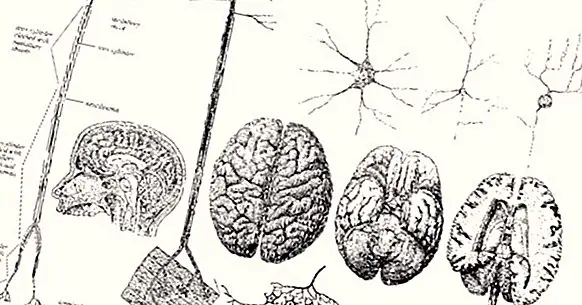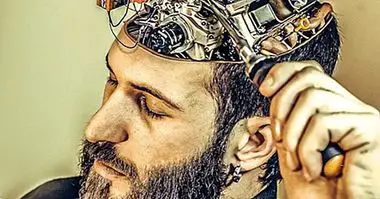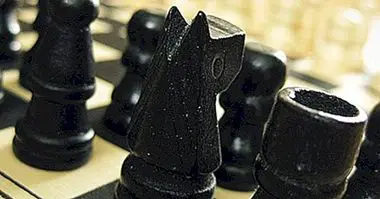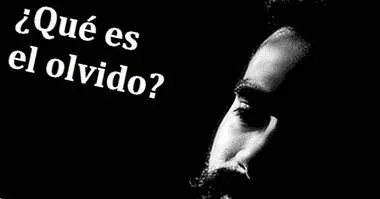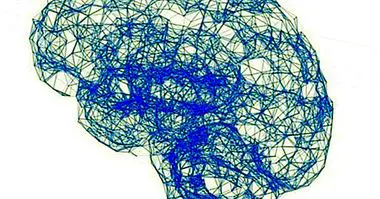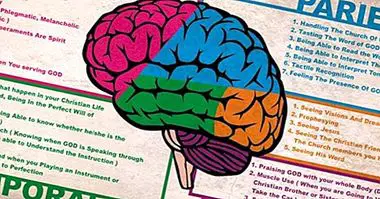What is declarative memory?
Do you remember what breakfast you had yesterday? How have you moved to college or work? Who have you addressed since you woke up? If the answer is affirmative, it means that your declarative memory works correctly.
This type of memory without which we could not function, stores all the explicit memories, that is, all the memories about episodes, facts and data of our life. From our eighth birthday to the taste of an orange.
- Related article: "Types of memory: how does memory store our brain?"
What is declarative memory
Declarative memory, also called explicit memory, is the ability to consciously bring about episodes or events of our life . It is thanks to her that we can relive experiences that happened long ago, recognize faces of famous people and name them or even what we have eaten throughout the week.
The history of declarative memory is relatively young. Its history goes back to the studies of the patient H.M. in 1957, which shed light on two questions: what components constitute memory, and where in the brain can we find declarative memory.
To the patient H.M., who suffered a severe epilepsy of the temporal lobes, these lobes were sectioned in both hemispheres. Successful control of epilepsy was achieved, but something unexpected happened: he had lost many memories of eleven years ago and could not remember anything from the last two years, and he was unable to create new memories. Thus, his declarative memory had been affected.
Surprisingly, it did retain the memory that stores motor skills. Going by bicycle, using language, etc., are skills that are stored differently because they are not data or episodes, but "ways of doing". This memory is called procedural or implicit memory. The existence of two large blocks of memory with different and anatomically independent functions was evidenced.
Neurological bases of declarative memory
The first difference between declarative and procedural memory is that they are located in differentiated regions . From this it follows that, at the functional level, they use different neuronal circuits and have a way of processing different information.
In procedural memory most of the information is stored as it is received from the senses. Psychologists say that it is a processing from the bottom up, that is, from the physical directly to the psychic. In contrast, in the declarative memory the physical data is reorganized before being stored. Since information depends on cognitive elaboration, we speak of a top-down process. The declarative memory, on the other hand, depends on the conceptually controlled or "top-down" processes, in which the subject reorganizes the data to store them.
In this way, the way we remember information is very influenced by the way we process it. That is why the internal stimuli that we use when storing information can help us to recall them spontaneously. In the same way, the contextual stimuli that are processed with the data can be a source of recovery. Some mnemonic methods exploit this feature of memory, such as the loci method.
Through the study of animals and humans, Petri and Mishkin propose that implicit and explicit memory follow different neural circuits. The structures that are part of the declarative memory are located in the temporal lobe. The most important ones are the amygdala, which plays a crucial role in the emotional process of memories, the hippocampus, which is responsible for storing or retrieving memories and the prefrontal cortex, which deals with the memory that stores the most short-term data .
Other structures are also included, such as the nuclei of the thalamus, which connect the temporal lobe with the prefrontal lobe, and the brainstem that sends the stimuli to the rest of the brain to be processed. The neurotransmitter systems most involved in these processes are those of acetylcholine, serotonin and noradrenaline .
Two types of declarative memory
Endel Tulving, through his studies on memory, distinguished in 1972 two subtypes of declarative memory: episodic memory and semantic memory. Let's see each of them below.
The episodic memory
According to Tulving, episodic or autobiographical memory is one that allows a person to remember past personal events or experiences. It allows human beings to remember past personal experiences. It requires three elements:
- Subjective sense of time
- Awareness of this subjective time
- A "self" that can travel in subjective time
To understand the functioning of memory, Tulving explains it through the metaphor of the journey of time . According to this metaphor, autobiographical memory is a kind of time machine that allows consciousness to travel back and voluntarily revisit past episodes. This is a capacity that requires consciousness and, therefore, is theorized that it is unique to our species.
Semantic memory
To the knowledge of the world-everything that is not autobiographical-Tulving called it semantic memory. This type of declarative memory includes all the knowledge that we can evoke explicitly that has nothing to do with our own memories. It is our personal encyclopedia, which contains millions of entries about what we know about the world.
Contains information learned at school such as vocabulary, mathematics , some aspects of reading and writing, figures or historical dates, knowledge about art and culture, and so on.

